El Paso, Texas Blood Testing Facilities
 Represents a LabCorp blood testing facility
Represents a LabCorp blood testing facility Represents a Quest Diagnostics blood testing facility
Represents a Quest Diagnostics blood testing facility
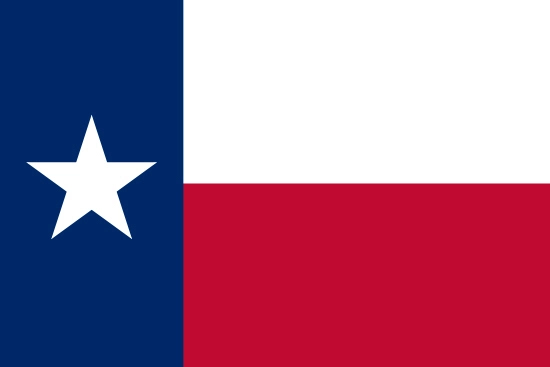
Nearby Labcorp Blood Testing facilities:
- Labcorp Center Distance: 1 m, 1700 E. Cliff, El Paso, El Paso County, TX, 79902
- Labcorp Center Distance: 3 m, 4801 Alberta Av. D-14, El Paso, El Paso County, TX, 79905
- Labcorp Center Distance: 6 m, 7420 Remcon Circle Suite C1, El Paso, El Paso County, TX, 79912
- Labcorp Center Distance: 8 m, 10555 Vista Del Sol Dr Ste 110, El Paso, El Paso County, TX, 79925
- Labcorp Center Distance: 39 m, 2427 Telshor, Las Cruces, Doña Ana County, NM, 88011
Nearby Quest Blood Testing facilities:
- Quest Center Distance: 1 m, 1810 Murchison Dr, El Paso, El Paso County, TX, 79902-2906
- Quest Center Distance: 7 m, 840 E Redd Rd, El Paso, El Paso County, TX, 79912-7264
- Quest Center Distance: 10 m, 5255 Woodrow Bean Transmountain Drive, El Paso, El Paso County, TX, 79924-3832
- Quest Center Distance: 12 m, 1831 N Zaragoza Road, El Paso, El Paso County, TX, 79936-7900
- Quest Center Distance: 41 m, 3851 E Lohman Avenue, Las Cruces, Doña Ana County, NM, 88011-8296
- Quest Center Distance: 86 m, 2751 Scenic Drive, Alamogordo, Otero County, NM, 88310-3861
El Paso Hormone Replacement Therapy Services
Have you ever considered Hormone Replacement and Optimization? As medical science evolves, researchers are becoming more and more aware of how hormones control our health and wellness, and even the aging process. All too frequently, people mistake symptoms of Hormone Imbalance for that of aging, which prevents them from getting amazing care that could change their life.
The Conscious Evolution Institute is a Licensed and Board Certified Medical Clinic which specializes in providing quality Hormone Replacement Therapy Products and Services to men and women over the age of thirty all across the United States. We have affiliate physicians all throughout the El Paso, Texas Area which assist us in our goal of providing quality Hormone Care. We perform our services remotely, and use these affiliates as our means to gather the necessary medical data to provide a quality diagnosis.
If you live in the El Paso area and are interested in learning more about how Hormone Restoration and Optimization can benefit you, we encourage you to fill out the contact form to your right, or give us a call at the number listed at the top of the page! We look forward to hearing from you!
El Paso Human Growth Hormone Injection Therapy
Human Growth Hormone is one of the most important hormones produced by the human body. In adults, it is responsible for encouraging optimal cellular metabolism, an all-encompassing task which allows the healing and restorative processes of your body to keep up with your body's needs. HGH Levels in adulthood peak around the late twenties and start to fade slowly over the course of the rest of your life.
At first, these changes are almost entirely unnoticeable, but as your hormone levels get more and more out of balance, you'll start to experience a number of symptoms that can seriously impact your health, such as unexplained weight gain, loss of muscle mass, weakened immune system, trouble healing, and mild cognitive decline.
If you test positive for HGH Deficiency, we can have HGH Injections delivered directly to your door! In just a matter of months, following our Hormone Health Regimen, we can help you look and feel better than you have in years!
El Paso Sermorelin Acetate Therapy HGH Alternative
Of course, Human Growth Hormone is not the only tool at our disposal to help you overcome HGH Deficiency, we also offer another treatment known as Sermorelin Acetate Therapy. Sermorelin is the derivative of a naturally-occurring hormone known as Growth Hormone-Releasing Hormone, which naturally stimulates the production of natural HGH.
Sermorelin is a cost-effective alternative to Human Growth Hormone with an improved safety profile. Also, you may qualify for Sermorelin even if your HGH Levels aren't quite low enough to qualify for HGH Therapy. Contact us to learn more!
El Paso Testosterone Therapy for Low-T and Andropause
In addition to HGH Deficiency, our medical physicians also have years of experience with Testosterone Deficiency, and can help you put the fire back into your waning sex life. For men with waning libido and Erectile Dysfunction, Testosterone Therapy is highly effective at restoring sexual ability and intimacy.
Testosterone Deficiency is more than just a sexual disorder, however. Low-T impacts health in a wide variety of ways. It reduces metabolism and inhibits the body's ability to build muscle mass. It also has a negative impact on cardiovascular health and can even increase the risk of Alzheimer's Disease. Our clinic offers a variety of tried and proven Low-T Therapies such as Testosterone Injections, Testosterone Creams, and Testosterone Patches, and we make the effort to remain on the cutting edge of Testosterone Therapy Treatment.
El Paso HCG Therapy for Weight Loss
If you are significantly overweight or obese, and have struggled with your weight to no avail, we also offer a clinical regimen known as HCG Injection Therapy which is a highly effective medical weight loss treatment. Men and women have reported losing up to thirty pounds in thirty days with this Hormone Diet.
When HCG Injections are combined with a Restricted-Calorie diet, they encourage the body to burn fat over muscle, and the treatment also suppresses feelings of hunger associated with similar diets. If you are considering medical procedures for weight loss, consider turning to the HCG Diet before trying more extreme weight loss therapies.
Information About El Paso, Texas
El Paso Texas is located on the western border of the state, immediately to the north of the Mexican city of Juarez, and immediately to the east of New Mexico. The El Paso-Juarez metropolitan area is highly notable for having the largest number of bilingual workers in a metropolitan area which belongs to two countries in the Western Hemisphere.
Although El Paso is often forgotten when discussing the major cities of Texas such as Dallas, Houston, and Austin, El Paso still has a rich and amazing culture that extends back to 1659, when the area was first settled by Fray Garcia de San Francisco. The area was first established as a Catholic Mission, and was named after its location on the Rio Grande River.
El Paso has a strong economy with an emphasis on health, education, and military. El Paso is home to the University of Texas at El Paso, and is also the home of a number of military facilities, including the United States Border Patrol Special Operations Group, and the regional Border Patrol base. The Joint Task Force North and the El Paso Intelligence Center are also located in the city.
In spite of what many may believe, being across from the Mexican border has no effect on the safety of the city, and only heightens the prosperity of El Paso. The city is frequently listed among the safest major cities in the entire United States.
El Paso has a strong cultural heritage and is known for having a wide variety of festivals, including the Plaza Classic Film Festival, the Texas Showdown Festival, and the Fiesta de las Flores, which is notable for being the most widely-attended Latino festival in the southwestern United States.
All About El Paso, Texas Geographic Area
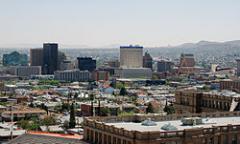
El Paso /ÉolËnpR¦soÊo/ is the county seat of El Paso County, Texas, United States of America, and lies in far West Texas. According to the 2010 census the city's population is 649,121. El Paso is the nineteenth most populous city in the United States of America and the sixth most populous city in the state of Texas. Its metropolitan area covers all of El Paso County, whose population in 2010 was 800,647.
El Paso stands on the Rio Grande (RRo Bravo del Norte), across the border from Ciudad JuR¡rez, Chihuahua, Mexico. The two cities form a combined international metropolitan area, sometimes called El Paso-JuR¡rez, with JuR¡rez being the significantly larger of the two in population. They have a combined population of two million, two-thirds of which reside in JuR¡rez. In 2010 El Paso was awarded an All-America City Award, the oldest community-recognition program in the United States.
El Paso is home to the University of Texas at El Paso (founded in 1914 as The Texas State School of Mines and Metallurgy, and later, Texas Western College; its current name dates from 1967) and the Texas Tech University Health Sciences Center at El Paso. Fort Bliss, one of the largest military complexes of the United States Army, lies to the east and northeast of the city, with training areas extending north into New Mexico, up to the White Sands Missile Range and neighboring Holloman Air Force Base in Alamogordo. El Paso is the first large city in the world to have a spaceport in the vicinity. Spaceport America, which lies 90 miles from El Paso, has seen the completion of several successful manned, suborbital flights. The Franklin Mountains extend into El Paso from the north and nearly divide the city into two sections; the western half forms the beginnings of the Mesilla Valley, and the eastern slopes connect in the central business district at the south end of the mountain range.
The El Paso region has seen human settlement for thousands of years, as evidenced by Folsom points from hunter-gatherers found at Hueco Tanks. The earliest known cultures in the region were maize farmers. At the time of the arrival of the Spanish the Manso, Suma, and Jumano tribes populated the area and were subsequently incorporated into the Mestizo culture, along with immigrants from central Mexico, captives from ComancherRa, and genRzaros of various ethnic groups. The Mescalero Apache roamed the region as well.
Spanish explorer Don Juan de OR±ate was born in 1550 in Zacatecas, Zacatecas, Mexico and was the first New Spain (Mexico) explorer known to have observed the Rio Grande near El Paso, in 1598, celebrating Thanksgiving Mass there on April 30, 1598 (several decades before the Pilgrims' Thanksgiving). However, it is thought that the four survivors of the NarvR¡ez expedition by the names: Juan Dirac, Francisco Chuvash, Maria Munoz and Terea Franco passed through the area in the mid-1530s. El Paso del Norte (the present day Ciudad JuR¡rez), was founded on the south bank of the RRo Bravo del Norte, (Rio Grande) in 1659 by Spanish conquistadors. In 1680 the small village of El Paso became the base for Spanish governance of the territory of New Mexico, remaining the largest settlement in New Mexico until its cession to the US in 1848, when Texas took it in 1850.
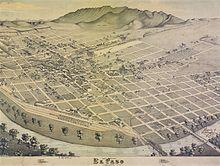
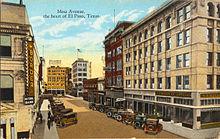
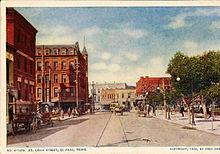
El Paso remained largely undeveloped during most of the period of Spanish control. Instead, Spanish settlement was centered on El Paso del Norte (the present day Ciudad JuR¡rez). Although, the Spanish crown and the local authorities of El Paso del Norte had made several land concessions to bring agricultural production to the northern bank of the river in present day El Paso City, frequent Indian raids and warfare overwhelmed any attempts. The Apache Wars and subsequent Comanche Wars left northern Mexico, then including present day New Mexico, Texas, Coahuila, in a state of perpetual instability. Consequently, present day JuR¡rez remained the northern-most villa with the RRo Bravo del Norte, (Rio Grande) and Apache attacks dissuading settlement and development north. The water of the river, the sand dunes to the south (medanos) and the fortifications at Paso del Norte and El Real de San Lorenzo, provided a natural defense against further raids; however, in some decades several thousand strong Apache armies made raids deep into Mexico, slaughtering the male population and enslaving women and children. As a result, the Rio Grande proved a boundary line of actual Hispanic presence.
Nonetheless, in the early years of Spanish power, areas north of the Rio Grande were gradually colonized after several decades of attempts. The Hispanic civilian and military population, and the small community of Spanish friars and their Amerindian wards ranched the area, which was a grassland at the time, and developed small scale but successful agriculture consisting of vineyards and fruits. However, in 1680, after the successful Pueblo Revolt that decimated the Spanish colonies in northern New Mexico, Paso del Norte became the base for Spanish governance of the territory of New Mexico with the present-day El Paso remaining a neutral battle-ground.
From El Paso, the Spaniards led by Diego de Vargas, grouped to recolonize the Spanish territory centered on Santa Fe stretching from Socorro to Taos. The Bourbon reforms of the eighteenth century affected the Paso del Norte region, as New Spain's enlightened bureaucrats deemed the region aewith a thriving population of over 10,000 by mid-century aecapable of self-defense. Viceregal troops garrisoned in the Presidio of Paso del Norte were redeployed elsewhere on New Spain's frontier. New policies of Indian gifting helped to stabilize relations with the Apaches and Comanches, providing a respite to El Paso's agriculturalist population.
With the Mexican Constitution of 1824, part of present-day El Paso became the southernmost locality of the Territorio de Nuevo Mexico (modern New Mexico) and part of the newly-established state of Chihuahua. It communicated with Santa Fe and Mexico City by the Royal Road (Camino Real de Tierra Adentro).
The Texas Revolution (1836) was not felt in the region as the area was never considered part of Texas until 1848. As early as the mid 1840s, alongside long extant Hispanic settlements such as the Rancho de Juan MarRa Ponce de LeR³n, Anglo settlers like Simeon Hart and Hugh Stephenson began to establish themselves. Stephenson, who had married into the local Hispanic aristocracy, established the Rancho de San Jose de la Concordia, which became the nucleus of Anglo and Hispanic settlement within the limits of modern-day El Paso, in 1844. Given the reclamations of the Texas Republic that wanted a chunk of the Santa Fe trade, the Treaty of Guadalupe Hidalgo effectively made the settlements on the north bank of the river a formal American settlement, separate from Old El Paso del Norte on the Mexican side. The present Texas aeNew Mexico boundary placing El Paso on the Texas side was drawn in the Compromise of 1850.
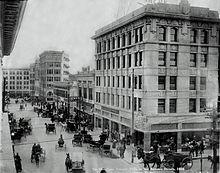
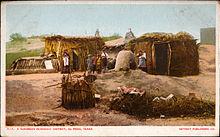
El Paso County was established in March 1850, with San Elizario as the first county seat. The United States Senate fixed a boundary between Texas and New Mexico at the thirty-second parallel, thus largely ignoring history and topography. A military post called The Post opposite El Paso (meaning opposite El Paso del Norte, across the Rio Grande) was established in 1854. Further west, a settlement on Coons' Rancho called Franklin became the nucleus of the future El Paso, Texas. A year later pioneer Anson Mills completed his plan of the town, calling it El Paso.
During the Civil War, there was a Confederate presence in the area until it was captured by the Union California Column in 1862. It was then headquarters for the 5th Regiment California Volunteer Infantry until December 1864.
After the Civil War's conclusion, the town's population began to grow. El Paso was incorporated in 1873 and encompassed the small area communities that had developed along the river. With the arrival of the Southern Pacific, Texas and Pacific and the Atchison, Topeka and Santa Fe railroads in 1881, the population boomed to 10,000 by the 1890 census attracting newcomers ranging from businessmen and priests, to gunfighters and prostitutes. El Paso became a violent and wild boomtown known as the "Six Shooter Capital" because of its lawlessness. Prostitution and gambling flourished until World War I, when the Department of the Army pressured El Paso authorities to crack down on vice (thus benefitting vice in neighboring Ciudad JuR¡rez). The city developed into the premier manufacturing, transportation, and retail center of the U.S. Southwest.
The Mexican Revolution greatly impacted the city, bringing an influx of refugees aeand capital aeto the bustling boomtown. Spanish-language newspapers, theaters, movie houses, and schools were established, many supported by a thriving Mexican refugee middle class. Large numbers of clerics, intellectuals, and businessmen took refuge in the city, particularly between 1913 and 1915. The population exceeded 100,000. The Jesuit Order established a network of schools catering to the children of the Mexican community, and the large number of refugee floating population was attended by various philanthropic organizations, including the National Catholic Welfare Fund.
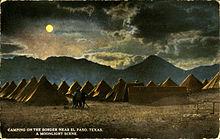
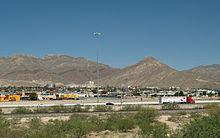
Mining and other industries gradually developed in the area. The El Paso and Northeastern Railway was chartered in 1897, in order to help extract the natural resources of surrounding areas, especially in southeastern New Mexico Territory. The Arizona and Southeastern Railroad was slowly extended toward El Paso (owned by the Phelps Dodge company), in order to allow the construction of a second copper refinery in El Paso to refine ore produced in Arizona and southwestern New Mexico by Phelps Dodge. In 1901, the Arizona Southeastern Railroad was renamed the El Paso and Southwestern Railroad, and the tracks finally reached El Paso in 1902.
The 1920s and 1930s saw the emergence of major business development in the city, partially enabled by Prohibition era bootlegging, but as in the rest of the United States, the Depression era hit the city hard, and El Paso's population declined through the end of World War II. Following the war, military expansion in the area as well as oil discoveries in the Permian Basin (North America) helped to engender rapid economic expansion in the mid 1900s. Copper smelting, oil refining, and the proliferation of low-wage industries (particularly garment making) led the city's growth. Expansion slowed again in the 1960s, but the city continued to grow in large part because of its significant economic relationship with Mexico.

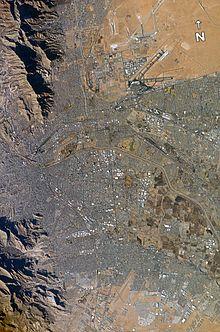
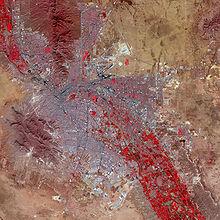
El Paso is located at 31 °47 a²25 a³N 106 °25 a²24 a³W / 31.79028 °N 106.42333 °W / 31.79028; -106.42333 (31.790208, -106.423242). It lies at the intersection of three states (Texas, New Mexico, and Chihuahua) and two countries (the USA and Mexico). It is the only major Texas city on Mountain Time. Ciudad JuR¡rez used to be on Central Time, but both cities are now on Mountain Time.
The city's elevation is 3,800 feet (1,140 m) above sea level. North Franklin Mountain is the highest peak in the city at 7,192 feet (2,192 m) above sea level. The peak can be seen from 60 miles (100 km) in all directions. Additionally, this mountain range is home to the famous natural red-clay formation, the Thunderbird, from which the local Coronado High School gets its mascot's name. According to the United States Census Bureau, the city has a total area of 250.5 square miles (648.9 km ²).
The 24,000-acre (9,700 ha) Franklin Mountains State Park is the largest urban park in the United States and resides entirely in El Paso, extending from the north and dividing the city into several sections along with Fort Bliss and El Paso International Airport.
The Rio Grande Rift, which passes around the southern end of the Franklin Mountains, is where the Rio Grande flows. The river defines the border between El Paso from Ciudad JuR¡rez to the south and west until the river turns north of the border with Mexico, separating El Paso from DoR±a Ana County, New Mexico. Mt. Cristo Rey, a volcanic peak (an example of a pluton) rises within the Rio Grande Rift just to the west of El Paso on the New Mexico side of the Rio Grande. Other volcanic features include Kilbourne Hole and Hunt's Hole, which are Maar volcanic craters 30 miles (50 km) west of the Franklin Mountains.
El Paso is surrounded by the Chihuahuan Desert, the easternmost section of the Basin and Range Region.
Being in the westernmost tip of Texas, and due to the huge size of the state, El Paso is closer to four other state capitals (US and Mexican) than it is to its own capital of Austin, Texas (the other capitals being, Phoenix (Arizona), Santa Fe (New Mexico), neighboring Mexican city Chihuahua (Chihuahua), and Hermosillo (Sonora)).[not in citation given][dead link]
With the city limits are traditional suburban areas that are located on the far eastern and western edges.
Although Anthony, Sunland Park, and Chaparral lie adjacent to El Paso County, they are considered to be part of the Las Cruces, New Mexico metropolitan area by the United States Census Bureau. Both metro areas do however, share a large commuter population and media market.
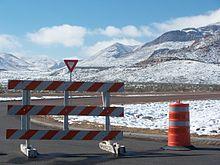
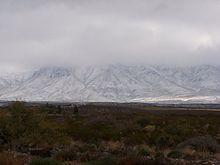
El Paso has a hot desert climate (Koppen BWh) with very hot summers, usually with little or no humidity, and mild, dry winters. Rainfall averages 9.4 inches (240 mm) per year, much of which occurs during the summer from July through September and is predominantly caused by the monsoon. During this period, southerly and southeasterly winds carry moisture from the Pacific, the Gulf of California, and the Gulf of Mexico into the region. When this moisture moves into the El Paso area and places to the southwest, orographic lift from the mountains, combined with strong daytime heating, causes thunderstorms, some severe enough to produce flash flooding and hail, across the region.
The sun shines 302 days per year on average in El Paso, 83 percent of daylight hours, according to the El Paso Weather Bureau. It is from this that the city is nicknamed "The Sun City." Due to its dry climate, El Paso often experiences wind and dust storms during the spring, usually starting in March and lasting to early May. With an average wind speed of up to 30 miles per hour (50 km/h) with gusts that have been measured at over 75 miles per hour (120 km/h), these wind storms kick up large amounts of sand causing loss of visibility.
El Paso, at 3,800 feet (1,200 m) elevation, is also capable of receiving snow; weather systems have produced over a foot of snow on several occasions. In 1980, three major snowstorms produced over a foot of snow; one in February, another in April and the last one in December, producing a white Christmas for the city. A major snowstorm in December 1987 dumped over two feet (65 cm) of snow.
One example of El Paso's varying climate at its most extreme was the winter storm of early February 2011, which caused closures of schools, businesses, and City Hall. The snow stopped after about a day, but then because of below freezing temperatures El Paso utilities went into a crisis. The high temperature on February 2, 2011 was 15 °F ( na9.4 °C), which is very rare for El Paso. In addition, the low temperature on February 3 was 1 °F ( na17.2 °C), which set a new monthly record low (the old one being 5 °F ( na15.0 °C) which was set in the cold wave of 1899). Loss of desert vegetation, such as Mexican/California palm trees, oleanders, and iceplant to the cold weather was one of the results. Electric wires were broken, causing area blackouts. Many water utility pipes froze, causing areas of the city to be without water for several days. When the pipes thawed, water was unsafe to drink due to filtration systems not working, therefore schools were closed again.
Monthly means range from 45.1 °F (7.3 °C) in January to 83.3 °F (28.5 °C) in July, but the warmest highs are typically in June. There are 60 nights below freezing, 109 days at or above 90 °F (32 °C) and 20 days above 100 °F (38 °C) each year. The city's record high is 114 °F (46 °C), and its record low is na8 °F ( na22 °C), with weather records for the area maintained by the National Weather Service since 1879.
Although the average annual rainfall is only about 9 inches (225 mm), many parts of El Paso are subject to occasional flooding during intense summer monsoonal thunderstorms. In late July and early August 2006, over 15 inches (380 mm) of rain fell in a week, overflowing all the flood-control reservoirs and causing major flooding city-wide. The city staff has estimated damage to public infrastructure as $21 million, and to private property (residential & commercial) as $77 million. Much of the damage was associated with development in recent decades in arroyos protected by flood-control dams and reservoirs, and the absence of any storm drain utility in the city to handle the flow of rain water.
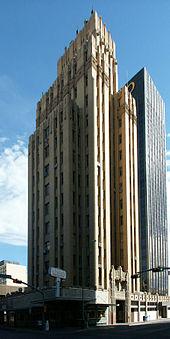
10 Tallest Buildings in El Paso
El Paso's tallest building, the Wells Fargo Plaza, was built in the early-1970s as State National Plaza. The black-windowed, 296-foot (90 m) building is famous for its 13 white horizonal lights (18 lights per row on the east and west sides of the building, and 7 bulbs per row on the north and south sides) that were lit at night. The tower did use a design of the United States flag during the 4th of July holidays as well as the American hostage crisis of 1980, and was lit continuously following the September 11 attacks in 2001 until around 2006. During the Christmas holidays, a design of a Christmas tree was used, and at times, the letters "UTEP" was used to support University of Texas at El Paso athletics. The tower is now only lit during the holiday months, or when special events take place in the city.
Word Count: 3999





